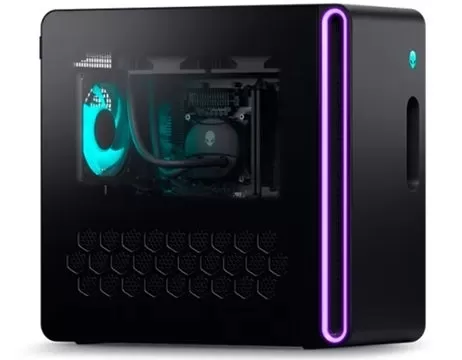At CES 2025, the showcase of new gaming monitors was nothing short of spectacular. My tour through the event revealed an array of innovative displays from the industry's leading vendors, marking 2025 as a pivotal year for gaming monitors. The advancements in display and graphics technology brought forth genuine surprises and elevated features, setting a new standard for what gamers can expect.
QD-OLED Isn’t Going Anywhere and Should Become More Accessible
The undeniable trend at CES 2025 for gaming monitors was the prominence of QD-OLED technology. Major brands like MSI, Gigabyte, and LG showcased their latest offerings, emphasizing enhanced burn-in warranties and protection features. This focus on QD-OLED reflects a continued push toward cutting-edge display technology throughout the year.
Given the surge in QD-OLED popularity during 2024, it's no surprise that 2025 models are even more impressive. Notable releases included multiple 4K 240Hz QD-OLED monitors with higher-bandwidth DisplayPort 2.1 connections. MSI introduced the MPG 272QR QD-OLED X50, a 1440p QD-OLED that boasts a staggering 500Hz refresh rate. Other brands followed suit with their own high-performance panels, signaling a future filled with fast and visually stunning monitors.
I was particularly impressed by the advancements in protection features. A standout was Asus's Neo Proximity Sensor integrated into the ROG Swift OLED PG27UCDM and ROG Strix OLED XG27AQDPG. This feature, part of the OLED Care suite, detects when you step away from your PC and displays a black screen to prevent burn-in and pixel wear. This is a significant improvement over the need to manually turn off monitors, a convenience that's much appreciated.As QD-OLED technology matures through successive generations, we can expect prices to become more accessible. While the launch prices of these models are still high, savvy buyers can find great deals on previous generations throughout the year.
Mini-LED Isn’t Dead, But It Is Tech To Keep an Eye Out For
Mini-LED technology, though less prominent at the show, still made a notable appearance. MSI's representative highlighted their dual-mode AI mini-LED monitor, the MPG 274URDFW E16M, as a more affordable alternative to QD-OLED, a strategy I hope proves successful.
The MPG 274URDFW E16M features 1,152 local dimming zones and a peak brightness of around 1,000 nits, delivering impressive contrast, especially in the well-lit showroom. It's a 4K monitor with a 160Hz refresh rate for smooth, high-resolution gaming, and can even switch to 320Hz at 1080p. However, the AI-driven "dual-mode AI" that automatically adjusts resolution based on content raised some skepticism for me.
While options were limited at the show, I anticipate more mini-LED models in the future. The technology offers exceptional brightness and contrast, with no risk of burn-in, making it a compelling choice for those wary of OLED's care requirements. If priced competitively, mini-LED could become a strong contender in the market.
Refresh Rates and Resolutions Continue to Climb
The advancements in QD-OLED and graphics card technology have driven refresh rates to new heights. 4K at 240Hz is now a reality, and 1440p at 500Hz isn't far behind. Gigabyte's Aorus FO27Q5P caught my eye with its sleek design and vibrant display, set to achieve VESA TrueBlack 500 certification. This certification ensures brighter highlights for enhanced HDR, a feature that sets it apart from other QD-OLED monitors. While other brands offer similar designs, such as the MPG 272QR QD-OLED X50, consumers will have a variety of options to choose from.
MSI also revived TN panels with the MSI MPG 242R X60N, which boasts an impressive 600Hz refresh rate. Although TN panels compromise on color and viewing angles, their speed is undeniable. Whether the average gamer will appreciate the clarity and latency improvements remains to be seen.
CES 2025 also marked the rise of 5K monitors. Acer showcased the Predator XB323QX, a 5K, 144Hz gaming monitor with Nvidia's latest G-Sync Pulsar technology. LG introduced two new "5K2K" gaming monitors, the Ultragear 45GX950A with a fixed 800R curve, and the Ultragear 45GX990A with a bendable display that can adjust from flat to a 900R curve.Beyond gaming, Asus unveiled the ProArt Display 6K PA32QCV, a 31.5-inch mini-LED display aimed at creators, priced at a competitive $1,249. While not ideal for gaming due to its 60Hz refresh rate, it exemplifies the industry's push toward higher resolutions.
Smart Monitors Bring TVs and Gaming Monitors Closer Together
Smart monitors continue to blur the lines between TVs and gaming displays. Although I had mixed feelings about the Samsung G80SD in my review, the convenience of having a monitor that doubles as a smart TV with streaming services is undeniable, especially for those in smaller living spaces.
This year, several new smart monitor options emerged. While not all were specifically targeted at gamers, the trend is clearly growing. HP introduced the OMEN 32x Smart Gaming Monitor, a 32-inch 4K display pre-loaded with streaming apps and capable of streaming to up to four platforms. LG's UltraGear 39GX90SA offers an ultrawide option with similar streaming capabilities and a deep 800R curve.
Samsung's M9 Smart Monitor features on-device neural processing to enhance its 4K OLED panel. It can detect on-screen content and adjust picture settings accordingly, while also upscaling lower resolution content to 4K. With a 165Hz refresh rate, it's also a viable choice for gaming.
Wrapping Up
CES 2025 provided a glimpse into the future of gaming monitors, showcasing innovations that push the boundaries of what's possible. Last year was a great, albeit expensive, year for gaming monitors, but 2025 promises even more exciting developments. Whether you're a gamer or a creator, the advancements in display technology are set to enhance your experience in unprecedented ways.








